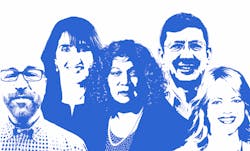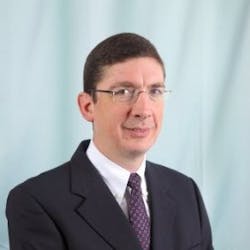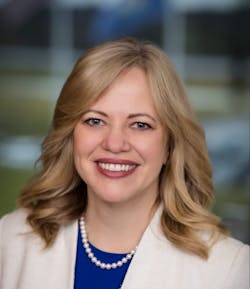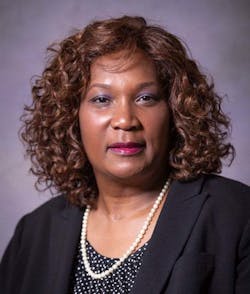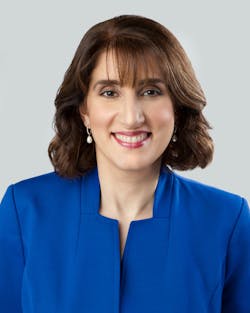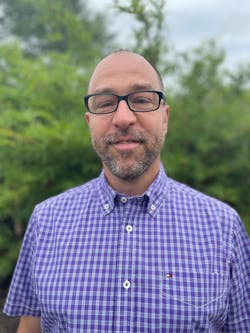Guiding the next generation of workers for a company or community organization can be immensely rewarding. But, how to share a lifetime of experience is a different task for everyone. For this story, IndustryWeek hand-picked five dedicated mentors in leadership roles to share their backstories and best advice.
GUSTAVO SEPULVEDA
Robotics and Automation Business Head, Panasonic Connect
Give Direction: Sometimes, people confuse mentoring with motivation, but they are not the same, says Sepulveda. “If you tell someone, ‘You are great, you’re doing everything fine,’ you’re not telling that person what he or she needs to improve. They may have a short-term gain and be motivated for the next one or two weeks. And that will be it. If you really care, you need to say, ‘Hey, you have to improve this.’”
A successful mentorship has three components, says Sepulveda, who usually meets with his mentees monthly. One, the mentee should not be in your department. “You cannot be his boss, or the boss’s boss,” he says, because the mentee will not be comfortable being open with you. Two, both parties must agree that everything in the session is confidential, so they can feel comfortable sharing their weaknesses. For the mentee, the weakness may be the current struggle they’re dealing with, and for the mentor, it may be a past struggle and what they learned from it. “Sometimes the best example is when the mentor gives an example of when he himself dropped the ball,” Sepulveda says. “That creates a lot of trust in the relationship.” Three, it’s important to reinforce that the mentor doesn’t solve the mentee’s problems—the mentor helps the mentee, “so that he or she finds the solution to the problem.”
SUSAN ELKINGTON
President, Toyota Motor Manufacturing Kentucky
Listen: “One of the key things as any mentor going into a mentoring relationship is to be open to learning,” Elkington says. That means the mentor may occasionally be in the student’s chair. Elkington has a number of mentees at Toyota Kentucky and other locations around the world, but she is also participating in a reverse mentorship focused on diversity. Her mentors are two younger Black employees. The reverse mentorship has helped her gain a better understanding of “what is going on in our communities with violence, some of the situations that have occurred and especially related to the murder of Breonna Taylor that impacted our community.” She’s learned of safety concerns from hearing others’ stories. “We’re not aware of what maybe Black members of our staff [encounter] on business travel,” she reflects. “How some of our members have to take precautions, especially as they travel to certain areas.”
ARVIS WILLIAMS
Vice President, Global Quality, BorgWarner
Make it Relatable: “Most of the young ladies that I work with in middle and high school have very low self-esteem in regards to taking on math and science,” Williams explains. “So, they don’t necessarily have an interest in STEM. I try to make them more comfortable and build a love for engineering science by explaining to them the application of math is really everything they see.” Their phones become lessons in conductivity “and how electronics works to transmit data, and how it’s received instantly.” The chairs they sit on are the introduction to a lesson in balancing forces in relation to gravity. “They have so many of the same influences in their lives as that counselor that will tell them what they can’t do,” she says.“I want to be the voice that encourages them, that gives them an ability to be empowered to dream a dream and accomplish it and not let anyone stand in their way.”
DESPINA ANASTASIOU
Global Business Development Director, Corporate Strategy, Dow
Be Approachable: The idea of a formal mentorship can be intimidating. When Anastasiou gives one of her “master classes” at Dow around topics like managing up or resilience after a setback, she sometimes shares her own experience, and afterward women will want to connect. “I’ve told them not to use the ‘M’ word if that will make them reluctant to reach out,” she says. “They can just request a single meeting and say, ‘Hey, Despina—you said something that resonated with me. Would you be open to meet with me so we can discuss things?’ And whether we formalize it with a certain frequency or cadence, I really don’t find that as valuable as being available for people when they need specific help, as long as they have a true purpose of what they’re trying to figure out.”
DAAN VERKOEIJEN,
Senior Director, Operations, DSM
Find What Fits: DSM has a formal mentoring program that matches people through a questionnaire, but Verkoeijen has had the most success setting up mentorships informally. “I have a large network of people I know,” he says. “So, if I talk to somebody and they say, ‘I would really be interested in the mentoring program,’ we talk it through.” He’ll ask if they want to go through the formal program or prefer to be paired with someone in his network that he thinks would be a good fit. “Knowing both people, I’m more certain there’s a click,” he says. “I can connect a process engineer in Mulgrave, Canada, with a process engineering manager with more experience in Kingstree, South Carolina. And I know personality-wise the chance that that works out: It’s 90%. And then it’s just, ‘Connect and talk, and if you like it, set your own frequency. Because sometimes it’s nice to have somebody to talk to that’s not your boss.’
About the Author

Laura Putre
Senior Editor, IndustryWeek
As senior editor, Laura Putre works with IndustryWeek's editorial contributors and reports on leadership and the automotive industry as they relate to manufacturing. She joined IndustryWeek in 2015 as a staff writer covering workforce issues.
Prior to IndustryWeek, Laura reported on the healthcare industry and covered local news. She was the editor of the Chicago Journal and a staff writer for Cleveland Scene. Her national bylines include The Guardian, Slate, Pacific-Standard and The Root.
Laura was a National Press Foundation fellow in 2022.
Got a story idea? Reach out to Laura at [email protected]
